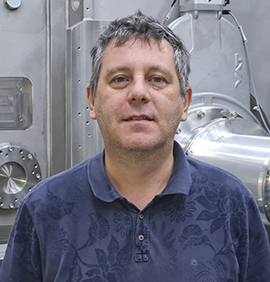 Palestra: Imaging Hierarchically NanoPorous Catalysts with Coherent x-ray DiffractiveImaging: New Opportunities at Sirius the Brazilian Ultra-Low Emittance Synchrotron Facility
Palestra: Imaging Hierarchically NanoPorous Catalysts with Coherent x-ray DiffractiveImaging: New Opportunities at Sirius the Brazilian Ultra-Low Emittance Synchrotron Facility
Resumo da Palestra: Novel 4 th generation synchrotron facilities and X-ray free-electron lasers are leading to the development of new X-ray methods of microscopy. Among these techniques, coherent diffractive imaging (CDI) is one of the most promising, enabling nanometre-scale imaging of non-crystallographic samples. Indeed, new visualisation methods can be used to resolve structures at resolutions that were previously unachievable. Here, I will present the application of ptychographic X-ray computed tomography for the visualisation of soft matter with a resolution of ~26 nm over large fields of view. Thanks to the high-penetration depth of the X-ray beam, we visualised the 3D complex porous structure of polymer hollow fibers in a non-destructive manner and obtain quantitative information about pore size distribution and pore network interconnectivity across the whole membrane wall. The non- destructive nature of this method, coupled with its ability to image samples without requiring modification or a high vacuum environment, makes it valuable in the fields of porous- and nano-material sciences enabling imaging under different environmental conditions. Moreover, the very recent implementation of plane-wave CDI enabled to image a 10 micron-size MCM22 zeolite crystal, three-dimensionally. The total experiment time was less than 2 hours with a resolution close to 50 nm. With further improvements, the temporal resolution of plane-wave CDI will pave the way to novel in situ time-resolved and in operando nanotomography studies exploring real-time phenomenon, spanning chemistry, biology, catalysis and materials research fields. These methods are implemented at the Cateretê beamline at the SIRIUS 4th generation synchrotron source based multibend achromat lattice.
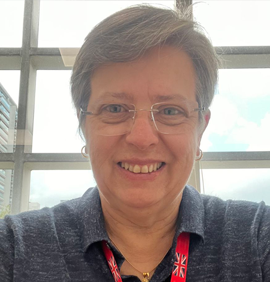 Palestra: How to increase the visibility of your submission
Palestra: How to increase the visibility of your submission
Resumo da Palestra: Get to know the Royal Society of Chemistry and manuscript submission guidelines: Publishing scientific papers became increasingly difficult. The demand is huge, and the message needs to be conveyed in the right way to capture the attention of the journal staff, the editor, the reviewers and finally (and most importantly) the readers. Let's see how we can change that by thinking ahead of time what publishers, like the Royal Society of Chemistry, are looking for. Some suggestions on how to organize your submission and therefore your text, data, and images, will be advised. The main message is fundamental. How to be prepared, in a competitive environment, to deliver a clear and meaningful idea about your scientific work? How your text can be precise and simple? What is the objective: numbers, citations, recognition, or engagement?
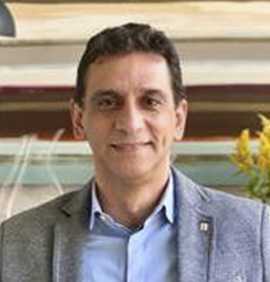 Palestra: Unlocking value from waste biomass: the versatility of Nb-based catalysts
Palestra: Unlocking value from waste biomass: the versatility of Nb-based catalysts
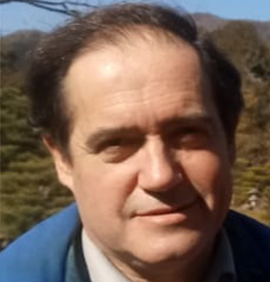 Palestra: Microwave irradiation synthesis of nanostructures: application in sustainable photocatalytic hydrogen generation
Palestra: Microwave irradiation synthesis of nanostructures: application in sustainable photocatalytic hydrogen generation
Resumo da Palestra: Hydrogen is an essential molecule for the chemical industry. However, 95% of its production comes from nonrenewable fossil fuels. Electrolyzers for water splitting (WS) are expected to produce green hydrogen in large-scale energy systems. On the other hand, it is a high-cost solution that requires fresh water, which represents only 3% of the Earth’s water resources. An alternative approach is the conversion of solar energy directly into chemicals through photocatalytic or artificial photosynthetic processes. Herein, environmentally friendly methods for the synthesis of nanostructures by microwave irradiation while simultaneously minimizing the use of hazardous chemicals will be presented. Application of the prepared nanostructures to the photogeneration of hydrogen in the photo-reform of alcohols under UV-vis and only visible light will be shown. TiO 2 -based photocatalysts, such as nanoparticles and nanotubes, as well as CaTiO 3 perovskite types, were impregnated with co-catalysts (Ag, CQDs, and Fe 2 O 3 ) and carefully characterized. Additional results in photoelectrochemical hydrogen generation also demonstrated the potential of charge separation as a true WS reaction. Finally, the actual challenges of sustainable photocatalytic hydrogen generation will be briefly addressed.
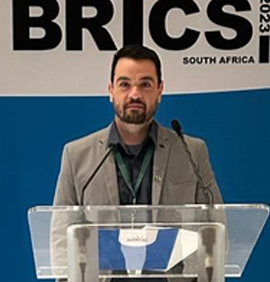 Palestra: Biocarvões derivados de lodo de esgoto como catalisadores mais sustentáveis: movendo para alternativas mais sustentáveis na conversão de moléculas plataforma
Palestra: Biocarvões derivados de lodo de esgoto como catalisadores mais sustentáveis: movendo para alternativas mais sustentáveis na conversão de moléculas plataforma
Resumo da Palestra: O Furfural tem uma importância significativa como um bloco de construção de base lignoceluósica, permitindo a produção de vários compostos de valor agregado para a indústria de química fina, biocombustíveis e biopolímeros por meio de vias catalíticas. Desenvolver catalisadores mais econômicos e sustentáveis para facilitar as reações de conversão do furfural em alinhamento com os princípios da Química Verde é essencial. Neste contexto, biocarvões derivados de lodo de esgoto emergem como materiais promissores para catalisar reações de conversão de Furfural e outras moléculas plataforma devido ao seu abundante conteúdo metálico e estrutura orgânica, fornecendo sítios ativos ácidos e básicos. Este estudo destaca a utilização de dois biocarvões derivados de lodo de esgoto como catalisadores para a conversão de Furfural e outras moléculas plataforma em compostos de alto valor agregado.
